The glycemic index (GI) is a tool used to measure how foods affect blood sugar levels. It ranks foods on a scale from 0 to 100 based on how quickly they raise blood glucose. Foods with a high GI score of 70 or more cause blood sugar to rise faster than those with a low GI score of 55 or less.

【Sugar Defender™】Buy Now $69 | SugarDefender Official Site
Buy Now Sugar Defender — Sugar Defender 100% Natural Formula. 60 Day Guarantee. Free Shipping. Only $49 per Bottle. Blood Sugar Defender Order 6 Bottles or 3 Bottles and Get 2 Free Bonuses.
Measuring the glycemic index involves testing foods on a group of people. After fasting overnight, participants eat a serving of food containing 50 grams of carbohydrates. Their blood sugar levels are then checked over the next two hours. The results are compared to how their bodies react to pure glucose or white bread.
The GI can be useful for people managing diabetes or trying to improve their diet. It helps identify which foods may cause rapid spikes in blood sugar. But the GI is just one factor to consider when making food choices. The amount of food eaten and other nutrients also play important roles in blood sugar control.
Key Takeaways
- The glycemic index measures how quickly foods raise blood sugar levels
- GI testing involves monitoring blood glucose responses after eating specific foods
- Using the glycemic index can help with blood sugar management and meal planning
Understanding Glycemic Index
The glycemic index measures how quickly foods raise blood sugar levels. It helps people make informed choices about carbohydrates in their diet.
Definition and Importance of Glycemic Index
The glycemic index (GI) ranks foods from 0 to 100 based on how fast they increase blood glucose. Foods with a high GI are quickly digested and absorbed, causing a rapid rise in blood sugar. Low GI foods are digested more slowly, leading to a gradual increase in blood sugar.
GI values are grouped into three categories:
- Low GI: 55 or less
- Medium GI: 56-69
- High GI: 70 or more
The glycemic index is important for managing diabetes, weight, and overall health. It helps people choose foods that won’t cause sharp spikes in blood sugar.
Comparison to Other Indexes
While the glycemic index focuses solely on carbohydrates, other measures provide a more complete picture. The glycemic load considers both the quality and quantity of carbohydrates in a serving.
Glycemic load = (GI x grams of carbohydrate) / 100
This calculation gives a more accurate idea of how a food affects blood sugar. For example, watermelon has a high GI but a low glycemic load due to its low carb content.
The insulin index is another measure. It looks at how foods affect insulin levels, not just blood sugar. This can be useful for people with insulin resistance.
Biological Fundamentals
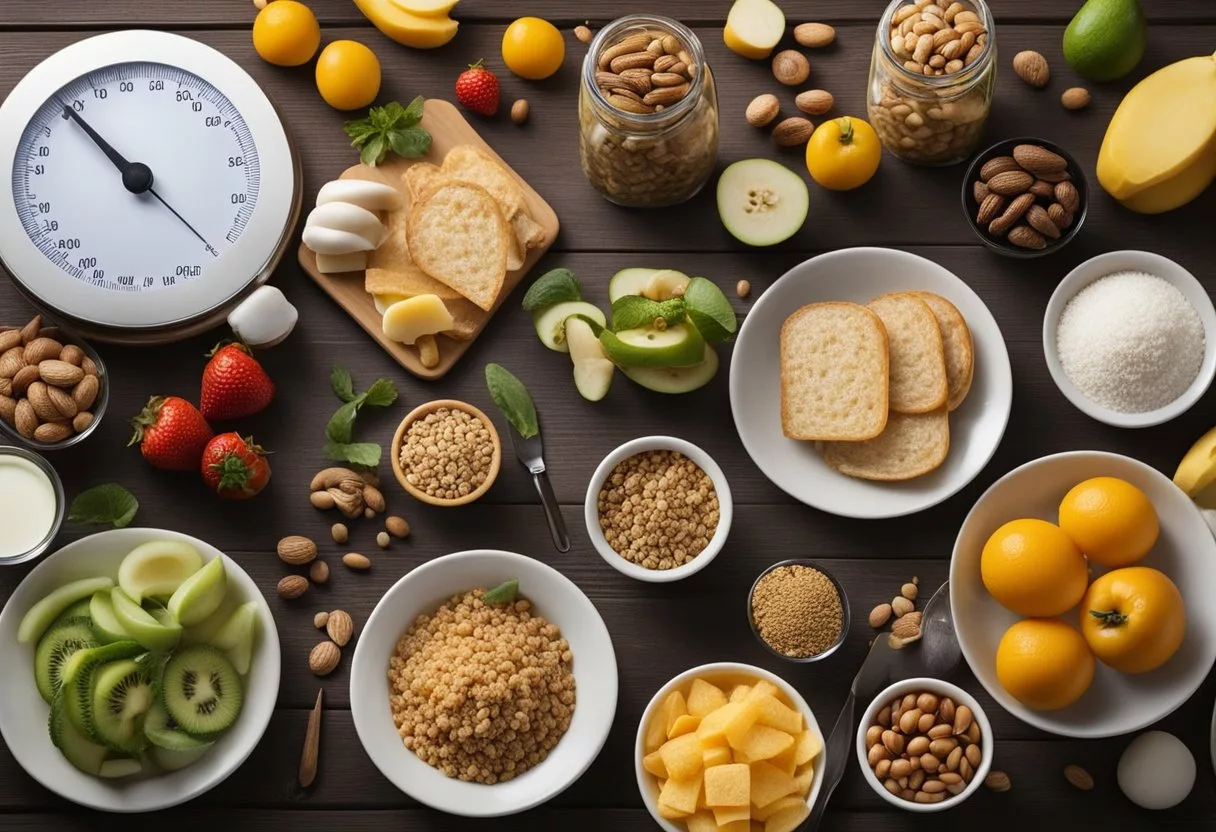
The glycemic index is based on how carbohydrates affect blood sugar. Fat and protein also play a role in this process. Let’s explore the key biological factors involved.
Role of Carbohydrates in Blood Sugar
Carbohydrates are the main source of glucose in our diet. When we eat carbs, our body breaks them down into simple sugars. These sugars then enter the bloodstream, raising blood glucose levels.
Different carbs affect blood sugar in various ways. Simple sugars cause a quick spike in blood glucose. Complex carbs take longer to digest and lead to a slower rise.
The body releases insulin in response to rising blood sugar. Insulin helps cells absorb glucose from the blood. This process keeps blood sugar levels in check.
Influence of Fat and Protein on Glycemic Index
Fat and protein can change how carbs affect blood sugar. They tend to slow down digestion and absorption of carbohydrates.
When you eat fat with carbs, it can lower the glycemic response. This means blood sugar rises more slowly. Protein has a similar effect.
These nutrients also stimulate the release of other hormones. These hormones can affect how quickly glucose enters the bloodstream.
Fat and protein don’t directly raise blood sugar like carbs do. But they can impact the overall glycemic index of a meal. This is why the glycemic index of mixed meals can be hard to predict.
Measurement of Glycemic Index
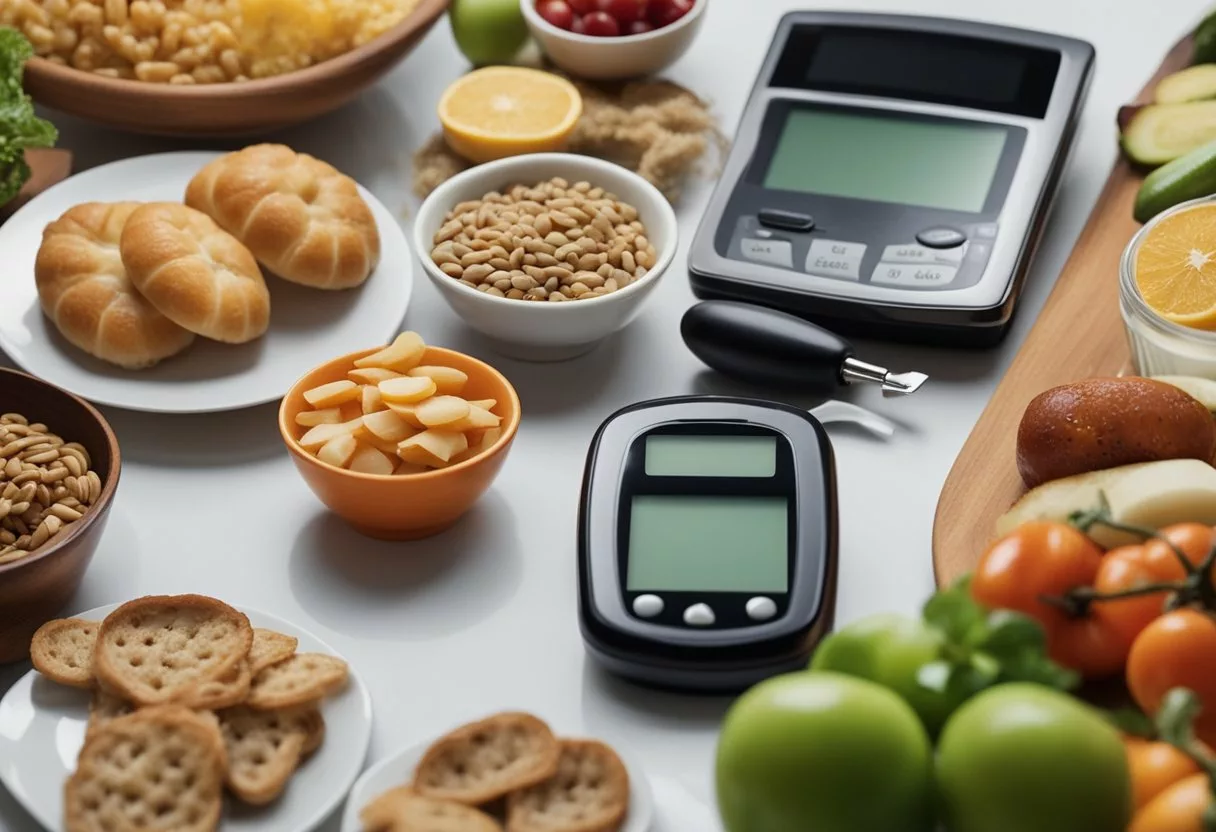
The glycemic index (GI) measures how foods affect blood sugar levels. It involves standardized testing and careful calculations. Several factors can influence the results.
Standard Method for Measuring GI Values
Scientists use a specific process to measure GI values. They start by selecting test subjects, usually 8-12 healthy people. These participants fast overnight, then eat a fixed amount of a test food containing 50 grams of carbohydrates.
Blood samples are taken before eating and at set times over the next two hours. This tracks how blood sugar levels change. The results are plotted on a graph, creating a blood sugar response curve.
The area under this curve (AUC) is calculated. It’s then compared to the AUC of a reference food, usually pure glucose or white bread. The GI value is this comparison expressed as a percentage.
Foods are ranked on a scale of 0-100. Higher numbers mean faster blood sugar spikes.
Factors Influencing Variability in GI
Many things can affect GI measurements. The ripeness of fruit changes its sugar content. Cooking methods alter food structure, impacting digestion speed.
Serving size matters too. Larger portions of low GI foods can still raise blood sugar significantly. Individual differences in digestion and metabolism also play a role.
Food combinations affect GI. Eating carbs with protein or fat can slow digestion and lower the overall GI. Fiber content in foods can reduce their glycemic impact.
Time of day and recent meals influence blood sugar responses. Even food temperature can make a difference. These variables make precise GI measurement challenging.
Researchers try to control these factors, but some variability is unavoidable. This is why GI values are often given as a range rather than a single number.
Glycemic Index of Common Foods
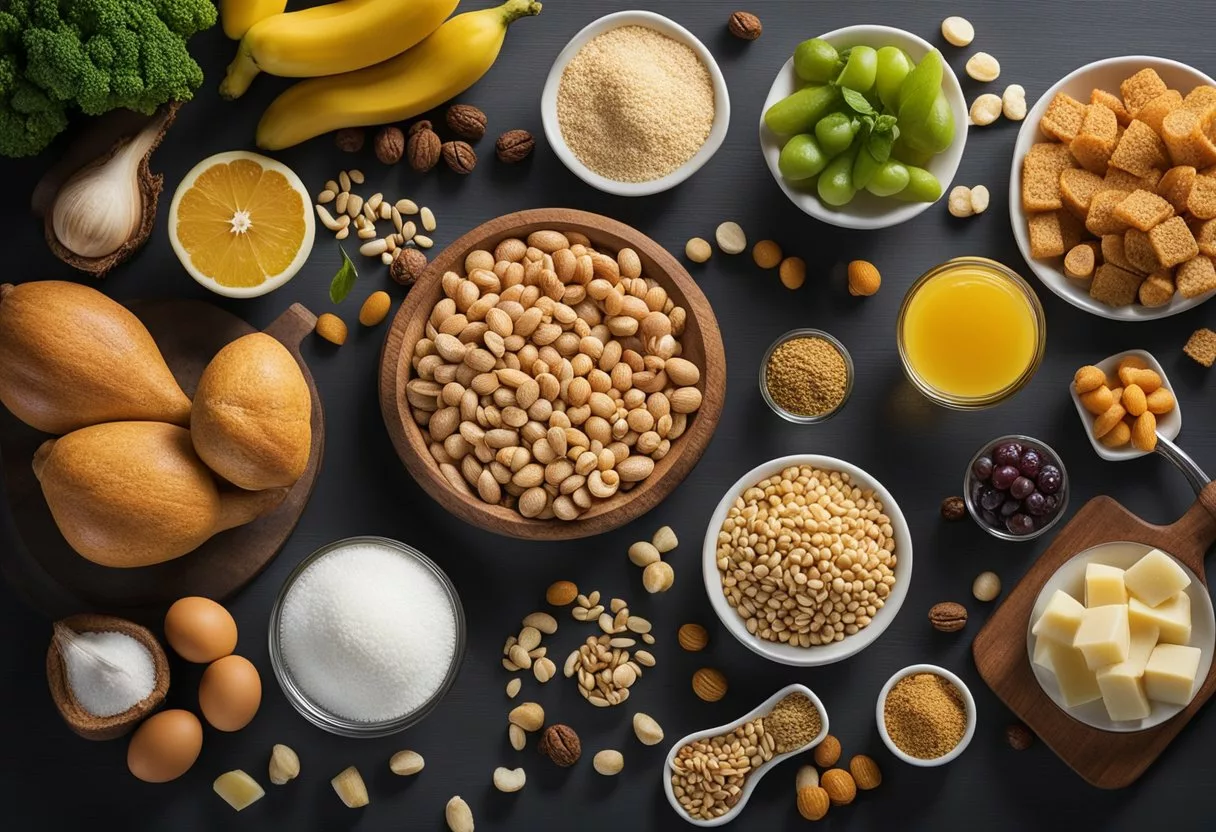
The glycemic index (GI) rates how quickly foods raise blood sugar levels. Foods are ranked on a scale of 0 to 100, with pure glucose given a value of 100. Understanding the GI of common foods can help people make informed dietary choices.
High-GI Foods and Their Effects
High-GI foods have a GI of 70 or above. These foods cause rapid spikes in blood sugar. White bread has a high GI, typically around 75. Other high-GI foods include:
- White potatoes
- White rice
- Candy
- Breakfast cereals like Cream of Wheat
These foods are quickly digested and absorbed. This leads to a fast rise in blood glucose. For some people, this can cause energy crashes later.
High-GI foods may be beneficial for athletes who need quick energy. But for most people, eating too many high-GI foods can lead to blood sugar issues over time.
Low-GI Foods and Their Benefits
Low-GI foods have a GI of 55 or less. They cause a slower, more gradual rise in blood sugar. Most fruits and vegetables are low-GI foods. Other examples include:
- Beans
- Nuts
- Whole grains
- Low-fat dairy products
These foods are digested and absorbed more slowly. This results in a gentler impact on blood glucose levels.
Low-GI foods can help with weight management and lower the risk of type 2 diabetes. They also provide sustained energy throughout the day.
Medium-GI Foods and Balanced Intake
Medium-GI foods have a GI between 56 and 69. These foods cause a moderate rise in blood sugar. Some common medium-GI foods are:
- Sweet potatoes
- Corn
- Couscous
- Bananas
Bananas have a GI score of about 50, putting them on the border between low and medium GI.
A balanced diet often includes a mix of low, medium, and high-GI foods. Medium-GI foods can be part of a healthy eating plan when combined with low-GI options.
It’s important to consider portion sizes and overall meal composition, not just the GI of individual foods.
Glycemic Index in Dietary Planning
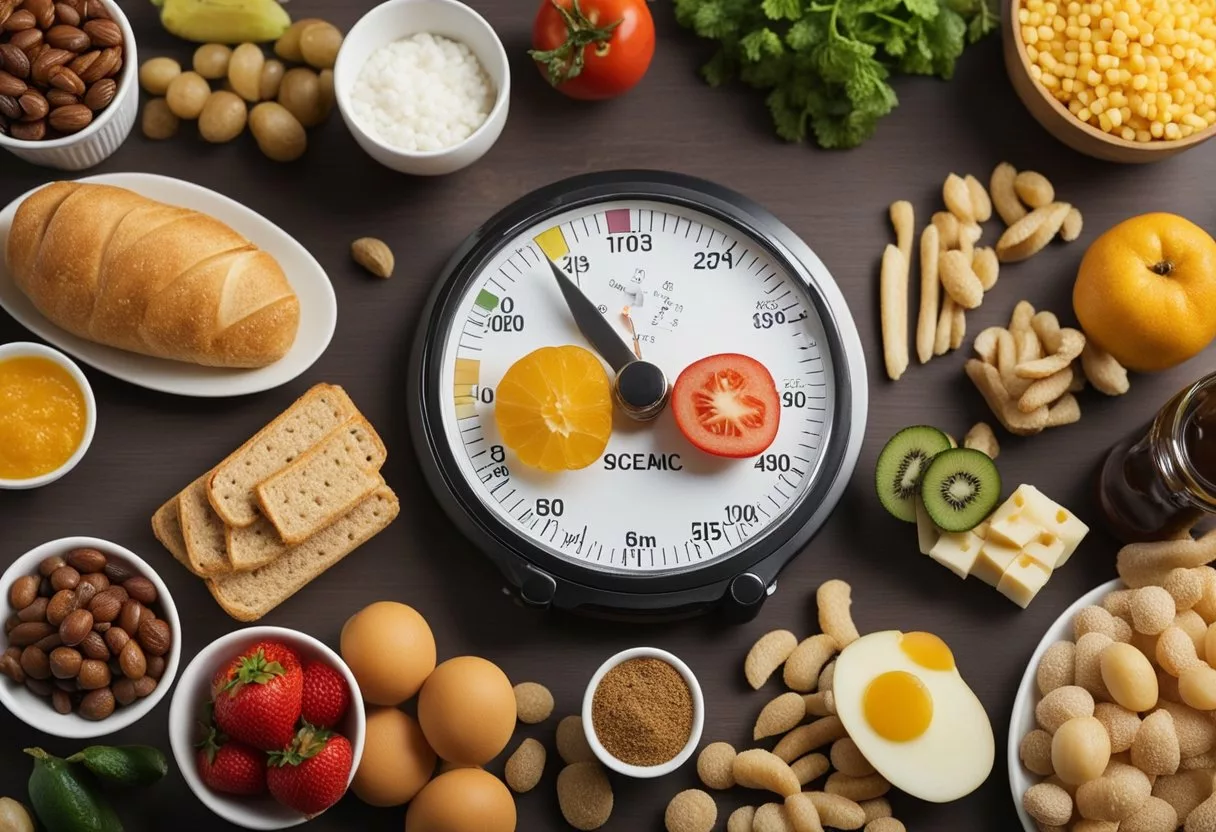
The glycemic index (GI) plays a key role in meal planning and weight management. It helps people make smart food choices to keep blood sugar levels stable.
Incorporating Low-GI Foods into Meals
Low-GI foods are great for steady energy levels. They include whole grains, legumes, and most fruits and vegetables. These foods digest slowly, avoiding blood sugar spikes.
A balanced meal might include:
- Lean protein (chicken, fish, tofu)
- Low-GI carbs (quinoa, sweet potato, lentils)
- Healthy fats (olive oil, avocado, nuts)
- Non-starchy veggies (broccoli, spinach, peppers)
Swapping high-GI foods for low-GI options is easy. Try whole grain bread instead of white bread. Choose steel-cut oats over instant oatmeal.
Impact of GI on Weight Management
Low-GI diets can help with weight loss. They keep you feeling full longer and reduce insulin levels.
Benefits of low-GI eating for weight management:
- Less hunger and fewer cravings
- Better appetite control
- Reduced fat storage
- Improved metabolism
Eating low-GI foods at each meal helps maintain steady blood sugar. This prevents energy crashes that can lead to overeating.
Combining low-GI foods with protein and healthy fats further slows digestion. This keeps you satisfied and energized between meals.
Health Implications

The glycemic index impacts several key health areas. It affects blood sugar control, appetite regulation, and heart health in important ways.
Glycemic Index and Diabetes Management
Low glycemic index foods help manage blood sugar levels in people with diabetes. These foods cause a slower rise in blood glucose after eating. This is especially helpful for those with type 2 diabetes.
Choosing low GI foods can improve long-term blood sugar control. It may also reduce the risk of diabetes complications.
Studies show that low GI diets can lower HbA1c levels in diabetics. HbA1c is a measure of long-term blood sugar control.
GI, Hunger, and Satiety
The glycemic index of foods affects feelings of fullness and hunger. Low GI foods tend to keep people feeling satisfied for longer.
This is because low GI foods are often higher in fiber and protein. They digest more slowly in the body.
Eating low GI foods may help with appetite control and weight management. This can be useful for those trying to lose weight or maintain a healthy weight.
Some studies suggest low GI diets may lead to greater fat loss compared to other diets.
Heart Disease and Glycemic Index
The glycemic index of the diet may impact heart disease risk. High GI diets have been linked to increased risk of heart disease.
Low GI diets may help lower “bad” LDL cholesterol and triglyceride levels. They may also help raise “good” HDL cholesterol.
Eating more low GI foods could reduce the risk of stroke and heart attack. This is likely due to better blood sugar control and less inflammation in the body.
Some research shows low GI diets may lower C-reactive protein. This is a marker of inflammation linked to heart disease.
Scientific Research and Future Direction

Research on glycemic index continues to evolve. Scientists are working to improve measurement accuracy and explore how GI relates to individual health.
Accuracy and Reliability of Glycemic Index Ratings
The American Diabetes Association recognizes glycemic index as a useful tool. But researchers face challenges in making GI ratings more precise.
Factors that can affect GI measurements include:
- Portion size
- Food preparation methods
- Individual differences in blood sugar response
Scientists are developing standardized testing protocols. These aim to produce more consistent GI values across different labs and studies.
New technologies allow more frequent blood sampling. This gives a clearer picture of glucose changes after eating.
The Role of Clinical Trials and Studies
Clinical trials are key to understanding glycemic index impacts. Large-scale studies track how low-GI diets affect health over time.
Researchers examine links between GI and:
- Weight management
- Diabetes control
- Heart disease risk
Studies also look at how GI interacts with other dietary factors. For example, how fiber or protein content might modify a food’s glycemic effect.
Some trials focus on specific populations. These include people with diabetes or those taking certain medications.
Future of GI and Personalized Nutrition
The future of glycemic index research is moving towards personalization. Scientists are exploring how individual factors affect glycemic response.
Areas of focus include:
- Genetic variations
- Gut microbiome differences
- Stress and sleep patterns
Wearable glucose monitors may soon provide real-time GI data. This could help people make food choices based on their unique responses.
Researchers are also investigating how GI fits into broader health goals. This includes studying its role in managing food cravings and supporting pancreas function.
As science advances, GI may become one part of a more comprehensive ranking system for foods. This could consider both glycemic load and other nutritional components.
Frequently Asked Questions
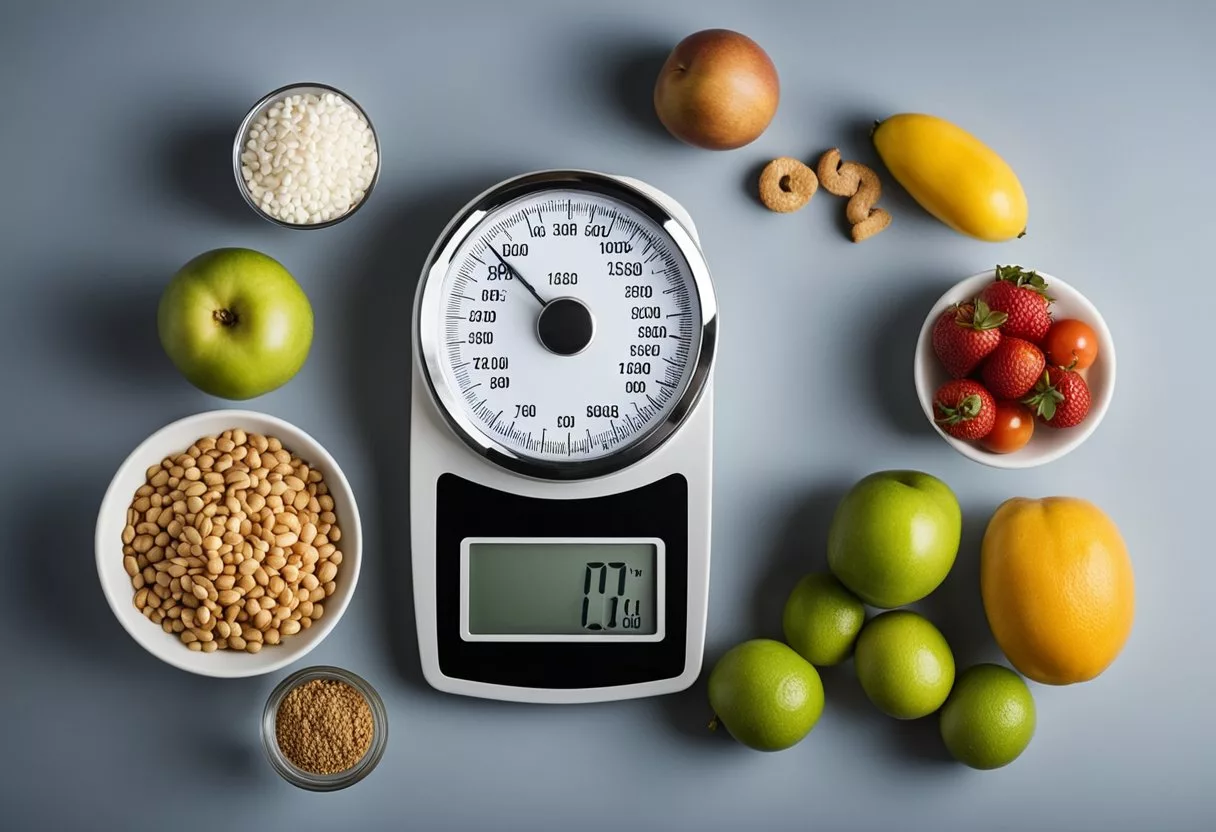
The glycemic index measures how foods affect blood sugar levels. It involves testing, classifying, and calculating values for different foods.
What criteria are used to classify foods in a glycemic index chart?
Foods are ranked on a scale of 0-100 based on how quickly they raise blood glucose. Low GI foods score 0-55, medium GI foods 56-69, and high GI foods 70 or above.
Can you determine the glycemic index from nutrition facts on food labels?
The glycemic index cannot be determined from standard nutrition labels. It requires specific testing of blood sugar responses in people after eating the food.
Which methods are employed in calculating the glycemic index of a specific food like rice?
Calculating the glycemic index involves testing the food on 10 or more people. Their blood sugar is measured over 2 hours after eating a standard amount of the food.
What is considered a low glycemic index for foods, and can you provide examples?
Foods with a glycemic index below 55 are considered low. Examples include most fruits and vegetables, beans, and whole grains. Bananas have a GI score of about 50.
How is the glycemic index tested in a laboratory setting?
In a lab, subjects fast overnight then eat a standard amount of the test food. Their blood sugar is measured at regular intervals over 2 hours. The results are compared to a reference food, usually pure glucose.
What glycemic index value is generally regarded as acceptable for maintaining glycemic control?
For glycemic control, it’s best to focus on foods with lower glycemic index values. Eating more foods with GI values under 55 can help manage blood sugar levels.
